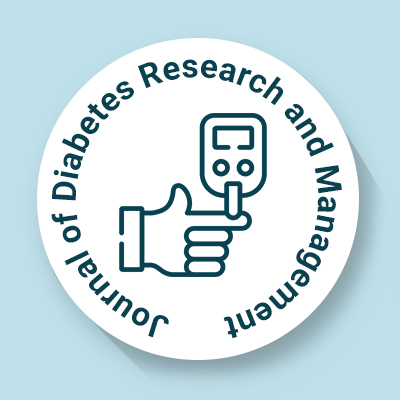
Journal of Diabetes Research and Management
OPEN ACCESS

OPEN ACCESS
Hypoglycemia, also known as low blood sugar, occurs when blood sugar levels drop below normal, usually below 70 mg/dL (3.9 mmol/L). To accurately identify hypoglycemic episodes, Whipple's triad is utilized. This triad includes having blood glucose levels below 70 mg/dL (3.9 mmol/L), experiencing symptoms related to hypoglycemia, and seeing those symptoms resolve once blood sugar levels return to normal. Symptoms of hypoglycemia can include headache, fatigue, clumsiness, difficulty speaking, confusion, rapid heartbeat, sweating, shakiness, anxiety, hunger, loss of consciousness, seizures, or even death. These symptoms often appear suddenly and can persist even shortly after blood sugar levels have increased.
The most common cause of hypoglycemia is the use of medications for diabetes, including insulin, sulfonylureas, and biguanides. The risk is higher for diabetics who have eaten less than usual, recently exercised, or consumed alcohol. Other factors that can lead to hypoglycemia include severe illnesses, sepsis, kidney failure, liver disease, hormone deficiencies, tumors like insulinomas or non-B cell tumors, inborn errors of metabolism, and certain medications. Low blood sugar can also occur in otherwise healthy newborns who haven't eaten for a few hours.
Hypoglycemia can be treated by consuming sugary foods or drinks, such as glucose tablets or gel, apple juice, soft drinks, or lollipops. It's important that the person is conscious and able to swallow. The aim is to ingest 10–20 grams of carbohydrates to elevate blood glucose levels to at least 70 mg/dL (3.9 mmol/L). If someone is unable to take food orally, glucagon can be administered through injection or insufflation. For hypoglycemia not related to diabetes, addressing the underlying issue is essential.
For people living with diabetes, the first step in prevention is to be aware of the signs and symptoms of hypoglycemia. Making adjustments to diabetes medications like insulin, sulfonylureas, and biguanides can play an important role in avoiding hypoglycemia. It is also a good idea to regularly check the blood glucose levels. Many people find that using continuous glucose monitors in combination with insulin pumps can really help them manage their diabetes and steer clear of hypoglycemia.